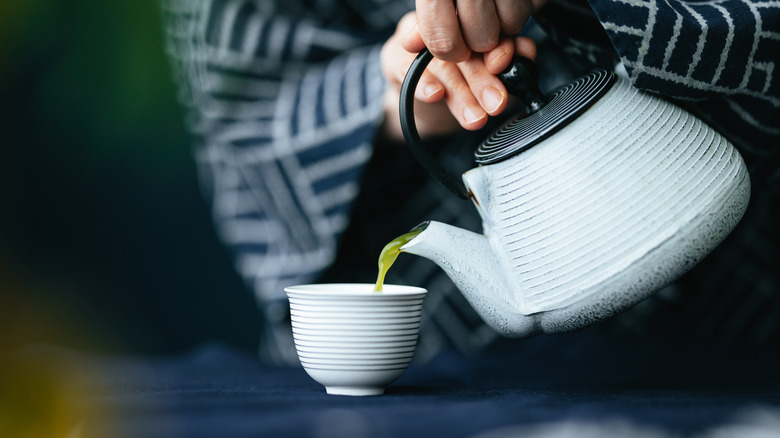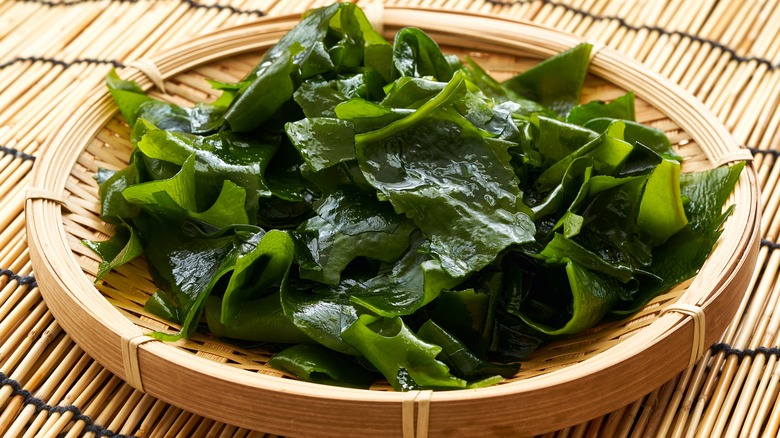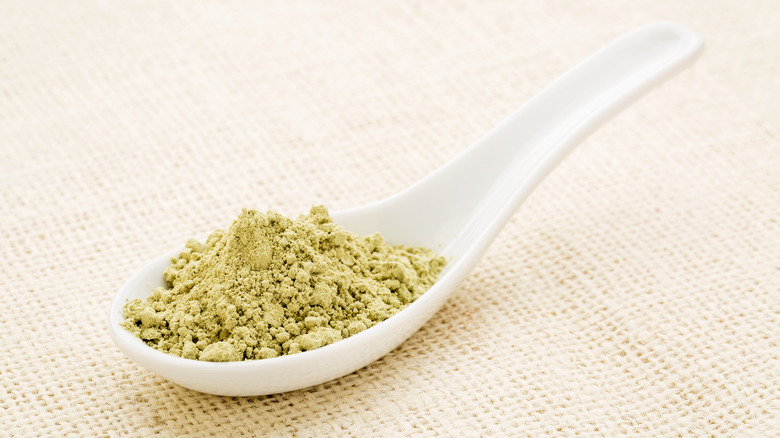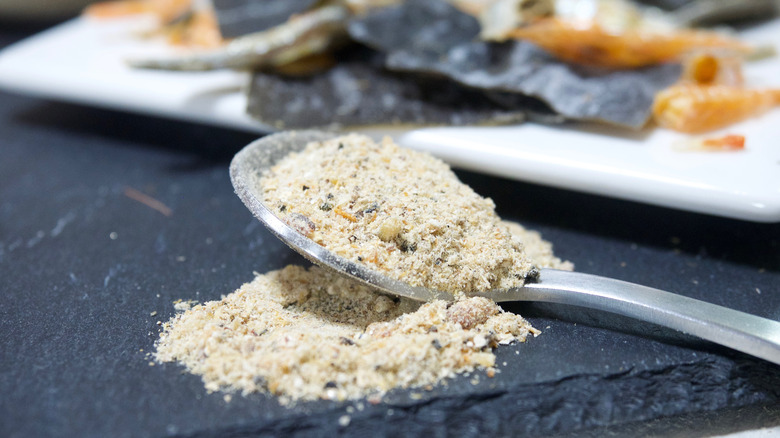Drink Kelp With Japan's Nutritious Kombu-Cha
For all intents and purposes, Japan's kelp kombu-cha can be considered the original kombucha as we know it. But it's a far cry from the bottled fizzy sweet stuff that surged onto the scene in the mid-2000s. The only thing the two have in common is their name. "Kombu" means kelp and "cha" means tea, and in Japan, this effervescent fermented sweet kelp tea is known as Kocha Kinoko.
Whether or not the likeness in the moniker is a mere coincidence or misinterpretation is unknown. Some theorize kombu-cha's literal meaning was lost in translation when it was adopted in China and became fermented green or black tea. Some believe the name is attributed to people noticing the strands of yeast hanging off the SCOBY and likening them to strips of kombu seaweed. Others claim a Korean physician by the name of Dr. Kombu first created the fizzy, fermented tea. Whatever the origin of the more popular kombucha's name, the two teas are markedly different beverages.
History of kombu-cha tea
Kelp seaweed grows at the northern tip of Japan and is an important staple in Japanese cuisine. Once it's harvested, dried, and packaged, it then goes on to a myriad of uses and applications, one being kombu-cha tea. The ritual of enjoying a hot cup of Japanese kombu-cha possibly extends as far back as 400 CE Japan. The exact history of the beverage is unknown, but it is believed to have originated from people steeping pieces of kelp in hot water and then eating the kelp. The liquid was then enjoyed as a tea.
The Japanese believe if you consume kombu, you will live a long and healthy life thanks to the minerals from the ocean and the spring water that flows down from the nearby mountain. They often drink kombu-cha as a celebratory beverage as the word kombu sounds similar to the Japanese word for rejoice.
How kombu-cha tea is made and how to drink it
Making kombu-cha is a much easier process than making its fizzy friend. It's simply dried strips of kombu that are ground into a powder and then dissolved in hot water. Sometimes a little salt or splash of soy sauce is added. Kombu-cha is sipped hot and usually in the afternoon or while eating a meal. The taste is chock full of umami thanks to the kelp. Kombu seaweed is also typically used to make Japanese stock known as dashi. It has a rich, meatiness to it with a slight vegetal sweetness and hint of the ocean.
Some of the prepackaged kombu-cha powders you will come across in health food stores or Asian markets are a combination of dried kelp and dried umeboshi. Umeboshi is a plum that adds a hint of sweet and tartness to the tea. Other varieties come with flecks of edible gold.
Benefits and other uses of kombu-cha
Kombu seaweed itself is a rich source of iodine, iron, calcium, trace minerals, and vitamins A and C, per UMass Chan Medical School. Kombu is also known to help break down the sugars in beans and can aid in digestion and prevent bloating. The powder can be added while cooking beans to help soften them for digestion.
Due to its rich flavor and saltiness, the powdered kombu-cha can also be used as a seasoning sprinkled over food such as rice or pasta, made into a broth, or added to sauces. It's also an excellent addition to green smoothies or salad dressings.
Outside of the kitchen powdered kelp kombu-cha can be added to bath powders and bath bombs for an at-home herbal spa experience. It can also act as a fertilizer for your garden. You can sprinkle the powder around plants, mix it with water and pour it to the roots or use it as a spray for the leaves.



